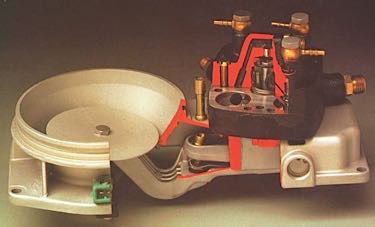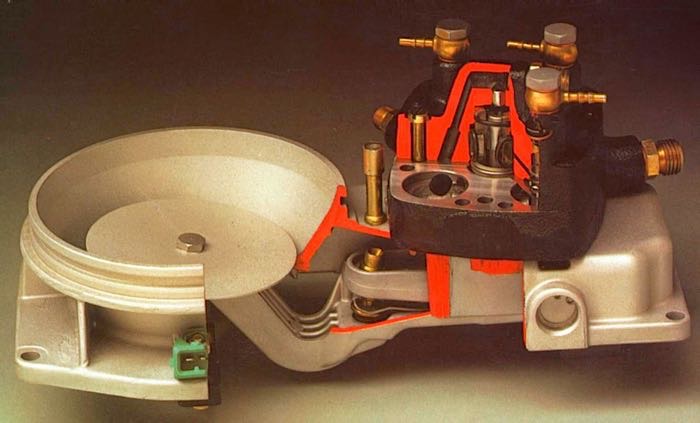 The 1970s were a strange time for fuel injection. Back then, these systems were analog (just like that Dark Side of the Moon vinyl record you used to own). At the start of the decade, you could find the Bosch D-Jetronic on many Volvos and VWs. This common rail system ran at constant pressure and the injector pulse duration was changed according to intake vacuum, barometric pressure and engine temperature. D-Jetronic did not have oxygen sensors or close-loop operation. By 1976, the system was no longer included in new vehicles.
The 1970s were a strange time for fuel injection. Back then, these systems were analog (just like that Dark Side of the Moon vinyl record you used to own). At the start of the decade, you could find the Bosch D-Jetronic on many Volvos and VWs. This common rail system ran at constant pressure and the injector pulse duration was changed according to intake vacuum, barometric pressure and engine temperature. D-Jetronic did not have oxygen sensors or close-loop operation. By 1976, the system was no longer included in new vehicles.
In 1973, Bosch took a step back to take a step forward. K-Jetronic (K stands for Kontinuierlich, or “continuous” in German. These systems were analog and very mechanical. The system used a fuel distributor that changed fuel pressure to the poppet injectors according to engine intake vacuum. The vacuum was measured by air volume with a vane mounted between the throttle body and intake manifold. The vane was mounted to an arm that was connected to a plunger in the center of the fuel distributor. The plunger was connected to a shaft that had slots that increased the amount of fuel sent to the individual injector lines surrounding the main fuel input to the distributor.
The system could control the fuel mixture by changing the pressure supplied to the fuel distributor. Later KE-Jetronic systems used an electronic actuator that could control the pressure supplied to the fuel distributor. This control allowed for faster fuel trim corrections through the use of sensor inputs like knock and oxygen.
For cold starts, the system used a separate injector mounted in the plenum of the intake manifold. The cold start injector was connected to a warm-up regulator that measured temperature and time needed to enrich the fuel mixture.
These systems were stepping-stones to modern electron fuel injection. What K-Jetronic did with analog vanes and plungers, modern systems now do digitally with mass airflow and oxygen sensors.














